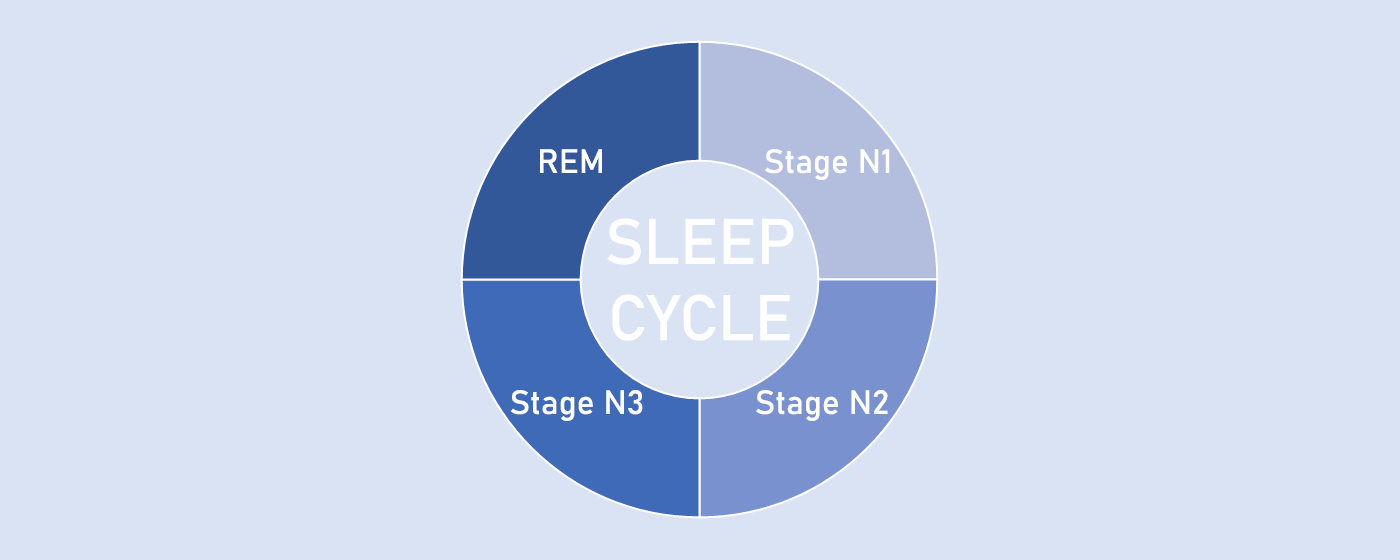Behind the Scenes of Sleep: The Sleep Cycle and NREM Sleep
10793 Views |

You may have heard that we humans spend about one-third of our lives sleeping. Science is still in the process of uncovering the many mysteries that occur behind the scenes of sleep, but it is well-established that your “sleeping” brain is not as passive and restful as you may think. With sleep being such an essential part of our lives, what really is going on inside your brain during those hours?
What is the sleep cycle?
A number of cognitive and bodily functions become active while you sleep. Distinct patterns of brainwave activity arise throughout the time asleep and can be differentiated into separate stages. According to the American Academy of Sleep Medicine, there are four stages in the sleep cycle: non-rapid eye movement (NREM) sleep consists of the first three stages, while rapid eye movement (REM) sleep is the fourth and final stage. Each sleep cycle typically lasts about 90 minutes in adults and is repeated around four or five times each night.
What is NREM sleep?
Stage 1 (N1) of NREM sleep usually begins right after falling asleep and is generally very short. In this period of light sleep or relaxed wakefulness, the sleeper may believe they have been fully awake and can be easily woken. In Stage 2 (N2), the sleeper can still be awoken somewhat easily. Muscles in the body become more relaxed and there is no eye movement while sleeping. When progressing to Stage 3 (N3), the sleeper becomes difficult to wake as they enter deep sleep. Stage 3 contains characteristically larger (high amplitude) and slower (low frequency) brainwave activity than the first two stages, thus earning the name slow wave sleep. Dreaming can occur in NREM sleep, particularly in Stage 3, but the dreams tend to be less vivid and harder to remember than those during REM sleep. The length of each stage of the sleep cycle varies throughout the night.
What is slow wave sleep?
Despite its name, the brain is highly active during slow wave sleep. It is suggested that slow wave sleep is important for consolidating memories from the previous day’s experiences. Going to sleep at night after intensively learning something new during the day leads to higher blood flow to the hippocampus during slow wave sleep in the following night. The hippocampus is a major region of the brain crucially involved in memory and learning, and blood flow to this region indicates brain activity. It is theorised that memory consolidation, or the process in which a recently-acquired memory is gradually committed to long-term memory by restructuring neuronal circuitry within the brain, occurs by reactivating these new memories during sleep.
The length of sleep cycles differs depending on various factors, a prominent one being age. Adults spend more time in NREM sleep than in REM sleep, leading to NREM sleep constituting to about 75-80% of one’s total sleeping time while REM sleep occupies the remaining 20-25%. Compared to adults, children spend more time sleeping per night and tend to sleep deeper as well, thus experiencing a proportionally larger amount of slow wave sleep. Slow wave activity is speculated to be important for brain development given its correlation with age. Children experience an increase in slow wave activity just before puberty and then a sharp decline when shifting from adolescence to adulthood. The decrease of slow wave activity when entering adulthood is suggested to signify the conclusion of brain maturation.
Altevogt, B. M., & Colten, H. R. (Eds.). (2006). Sleep disorders and sleep deprivation: an unmet public health problem. National Academies Press.
Buchmann, A., Ringli, M., Kurth, S., Schaerer, M., Geiger, A., Jenni, O., & Huber, R. (2011). EEG Sleep Slow-Wave Activity as a Mirror of Cortical Maturation. Cerebral Cortex, 21(3), 607-615.
Feinberg, I., De Bie, E., Davis, N., & Campbell, I. (2011). Topographic differences in the adolescent maturation of the slow wave EEG during NREM sleep. Sleep, 34(3), 325-333.
Maquet, P. (2010). Understanding non rapid eye movement sleep through neuroimaging. The World Journal of Biological Psychiatry, 11(S1), 9-15.



